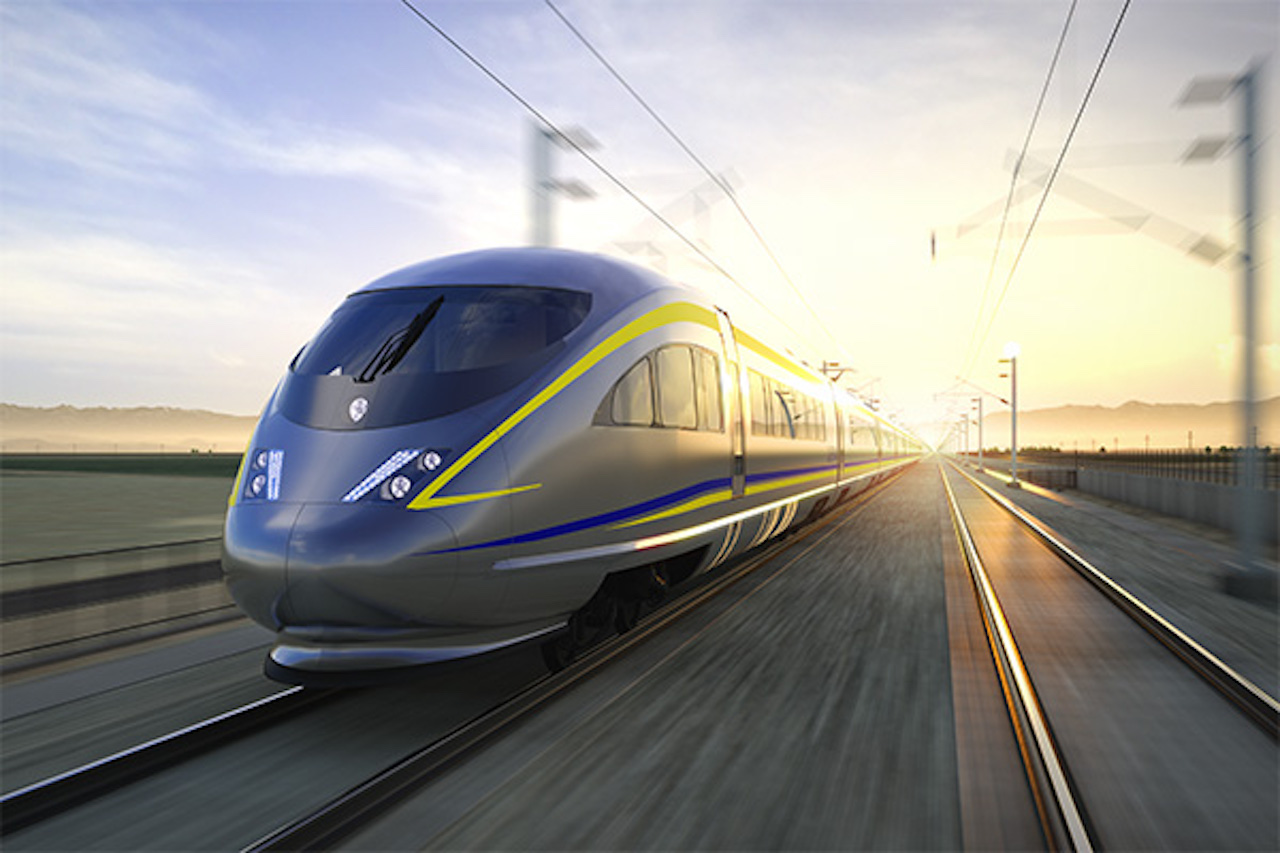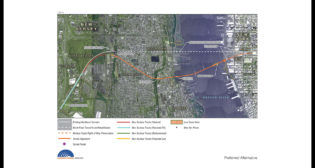
CHSRA Releases Final EIR/EIS Needed to Connect San Francisco to Downtown L.A.
Written by Carolina Worrell, Senior Editor
Rendering Courtesy of CHSRA
The California High-Speed Rail Authority (CHSRA) on May 24 released the final environmental documentation for the more than 30-mile segment between Palmdale and Burbank in Southern California.
According to CHSRA, this is the last key environmental document needed to connect San Francisco to downtown Los Angeles. The document is on track to be presented to CHSRA’s Board of Directors for consideration during a two-day board meeting June 26 and 27.
“This is a huge milestone for the project, and it represents the culmination of years of analysis and stakeholder engagement to connect high-speed rail between two of the state’s major metropolitan centers, San Francisco and Los Angeles,” said CHSRA CEO Brian Kelly. “With board approval, the project will have environmental clearance for 463 miles of the Phase 1 system between downtown San Francisco and downtown Los Angeles.”

At speeds up to 220 mph, this section will connect the Antelope Valley to the San Fernando Valley in a roughly 17-minute train trip—more than twice as fast as traveling by car, according to CHSRA. The Palmdale to Burbank Project Section will connect two key population centers in Los Angeles County by linking future multimodal transportation hubs in Palmdale and Burbank. The section features about 30 miles of tunneling, including 28 miles through mountains.
The Final Environmental Impact Report/Environmental Impact Statement (EIR/EIS) includes analysis of all six build alternatives and the No Project Alternative. The preferred alternative is the SR14A Alternative, which runs along State Route 14 and is approximately 38 miles. It will be a grade-separated, high-speed rail-only system. Trains operating on the Preferred Alternative would be underground through the community of Acton and much of the Angeles National Forest and the San Gabriel Mountains National Monument. Tunneling through these regions “minimizes impacts to communities and environmental resources in the region,” according to CHSRA.
CHSRA serves as the lead agency under the California Environmental Quality Act (CEQA) and the National Environmental Policy Act (NEPA). The Draft EIR/EIS was circulated for public review and comment from early September through early December 2022. CHSRA has considered all substantive comments received during the public comment period and responses to the comments are documented in the Final EIR/EIS. The document includes:
- An analysis of alternatives, including impacts and effects.
- Mitigation measures proposed to reduce environmental impacts and effects.
- Public comments received on the Draft EIR/EIS and responses to those comments.
- Revisions to the Draft EIR/EIS made in response to comments.
Pending Board approval, CHSRA can begin preparing this segment for construction as funding becomes available. All that remains to environmentally clear the full 494-mile Phase 1 system of the project is the Los Angeles to Anaheim segment, which CHSRA says it expects to finalize next year.
The Final EIR/EIS can be found here.



